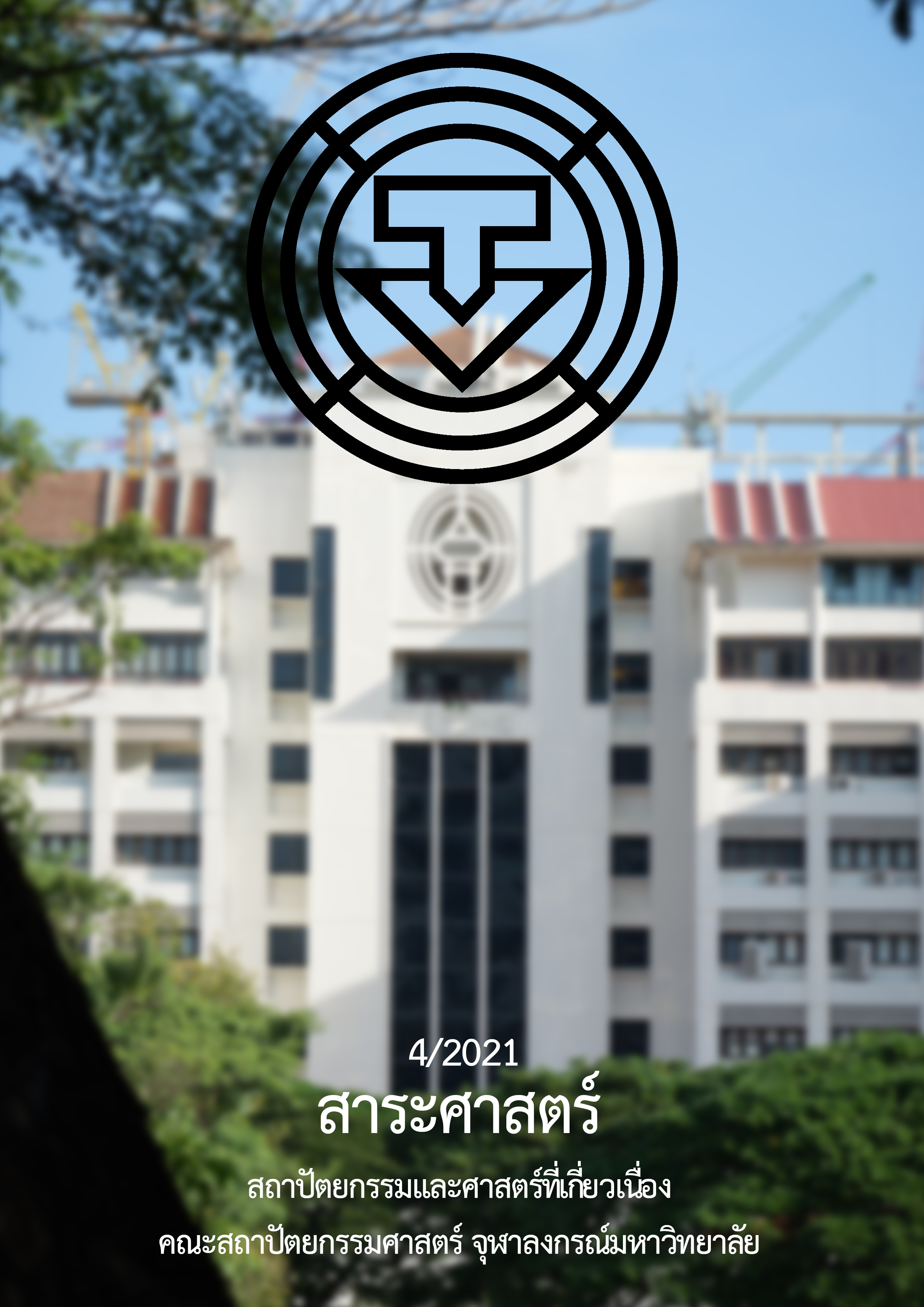การพัฒนาพื้นที่ใช้สอยอาคารบ้านพักอาศัยเพื่อส่งเสริมการท่องเที่ยวแบบเรือนแรมอย่างมีส่วนร่วม กรณีศึกษา จังหวัดพระนครศรีอยุธยา
Main Article Content
บทคัดย่อ
งานวิจัยการพัฒนาที่อยู่อาศัยของคนในพื้นที่ต้นแบบศึกษา จังหวัดพระนครศรีอยุธยาอันเป็นเมืองท่องเที่ยวและเมืองมรดกโลกให้ประชาชนสามารถสร้างรายได้จากการปรับปรุงที่อยู่อาศัยเพื่อกระจายรายได้จากการท่องเที่ยวสู่ภาคครัวเรือน และเป็นแนวทางในการพัฒนาโฮมสเตย์ให้แก่ชุมชนและผู้ที่สนใจด้านการท่องเที่ยวในพื้นที่ และสร้างให้ชุมชนเข้มแข็ง เพื่อเป็นแนวทางการบริหารจัดการพื้นที่อาคารเพื่อเป็นโฮมสเตย์ให้ถูกวิธี รวมทั้งช่วยให้คำปรึกษา คำแนะนำให้กับผู้ประกอบการหรือผู้ที่สนใจจะดำเนินการโฮมสเตย์ต่อไปในอนาคต โดยทำการสำรวจข้อมูลและวิเคราะห์จากกลุ่มตัวอย่างผู้ใช้บริการโฮมสเตย์ทั้งชาวไทยและต่างชาติและทำการคัดเลือกโฮมสเตย์จำนวนบ้าน 4 หลัง ที่เป็นโฮมสเตย์ได้รับการรับรองมาตรฐานจากกรมการท่องเที่ยว มีความเป็นอัตลักษณ์ความเป็นพื้นถิ่นและมีเจ้าของเป็นคนในท้องถิ่นที่อาศัยในพื้นที่
ผลของการศึกษาตัวชี้วัดนำไปสู่การพัฒนารูปแบบการออกแบบโฮมสเตย์ที่มีประสิทธิภาพมากขึ้น แนวทางในการออกแบบที่เน้นรูปแบบของการคงไว้ซึ่งอัตลักษณ์ความเป็นพื้นถิ่นให้ได้มากที่สุด ผู้วิจัยได้ทำการสำรวจกลุ่มตัวอย่างธุรกิจโฮมสเตย์ทั้งหมด 4 แห่งในจังหวัดพระนครศรีอยุธยาเพื่อนำมาเป็นต้นแบบในการออกแบบและพัฒนาโฮมสเตย์เพื่อส่งเสริมเศรษฐกิจและชุมชนในจังหวัดรวมถึงได้มีการวิเคราะห์ ข้อมูลพื้นฐานทางเศรษฐศาสตร์และความเป็นไปได้ในการพัฒนาที่อยู่อาศัยในจังหวัดพระนครศรีอยุธยาให้เป็นแหล่งส่งเสริมรายได้แก่ชุมชนในรูปแบบของโฮมสเตย์
จากการศึกษาสรุปได้ว่าประชาชนส่วนใหญ่มีความเห็นว่าควรมีนโยบายส่งเสริมการท่องเที่ยวโดยทำการพัฒนาควบคู่ไปกับการอนุรักษ์ ซึ่งประกอบไปด้วยการพัฒนาความรู้ของชาวบ้าน สาธารณูปโภค และอนุรักษ์วัฒนธรรมประเพณีและวิถีชีวิตที่ดีงามของชุมชนในส่วนของปัจจัยที่ก่อให้เกิดการท่องเที่ยวแบบโฮมสเตย์นั้น จังหวัดพระนครศรีอยุธยามีทรัพยากรทางการท่องเที่ยวที่หลากหลายวีถีชีวิตดั้งเดิมของชุมชนการพัฒนาการท่องเที่ยวแบบโฮมสเตย์หากมีการวางแผนในการพัฒนาที่ดีพอก็จะเกิดผลกระทบในทางบวกในด้านเศรษฐกิจ สังคมวัฒนธรรม และสิ่งแวดล้อมตลอดจนการสนับสนุนและส่งเสริมการท่องเที่ยวจากหน่วยภาครัฐที่เกี่ยวข้อง
Article Details
เอกสารอ้างอิง
Bollen, K. A. (1989). Structural equations with latent variable. New York: John Wiley & Sons.
Fennell, D.A. (1999). Ecotourism: An introduction. New York: Routledge.
Hair, J. F. (2010). Multivariate data analysis: A global perspective. Upper Saddle River, NJ: Pearson Education.
Honey, M. (1999). Ecotourism and sustainable development: Who owns paradise? Washington, DC: Island Press.
Kline, L. B. (2011). Principles and practice of structural equation modeling (3rd ed.). New York: The Guilford Press.
Mader, R. (2004). Definitions. Retrieved March 29, 2004, from http://www.planeta.com/ecotravel/tour/definitions.html
Merg, M. (1999). Defining ecotourism. Retrieved March 29, 2004, from http://www.untamedpath.com/Ecotourism/ defining.html
Nawhath Thanvisitthpon. (2015, September). A social impact assessment of the tourism development policy on a heritage city, Ayutthaya Historical Park, Thailand. International Journal of Asian Tourism Management, 6(2), 103-114.
Nawhath Thanvisitthpon. (2016). The tourism development policy for Thailand’s Ayutthaya historical park on the locals’ livelihoods and government responsibility. the Silpakorn University Journal Social Sciences, Humanities, and Arts, 16(2), 1-20.
Nawhath Thanvisitthpon. (2019, October 1). Impact of land use transformation and anti-flood infrastructure on flooding in world heritage site and peri-urban area: A case study of Thailand’s Ayutthaya province. Journal of Environmental Management, 247, 518-524.


